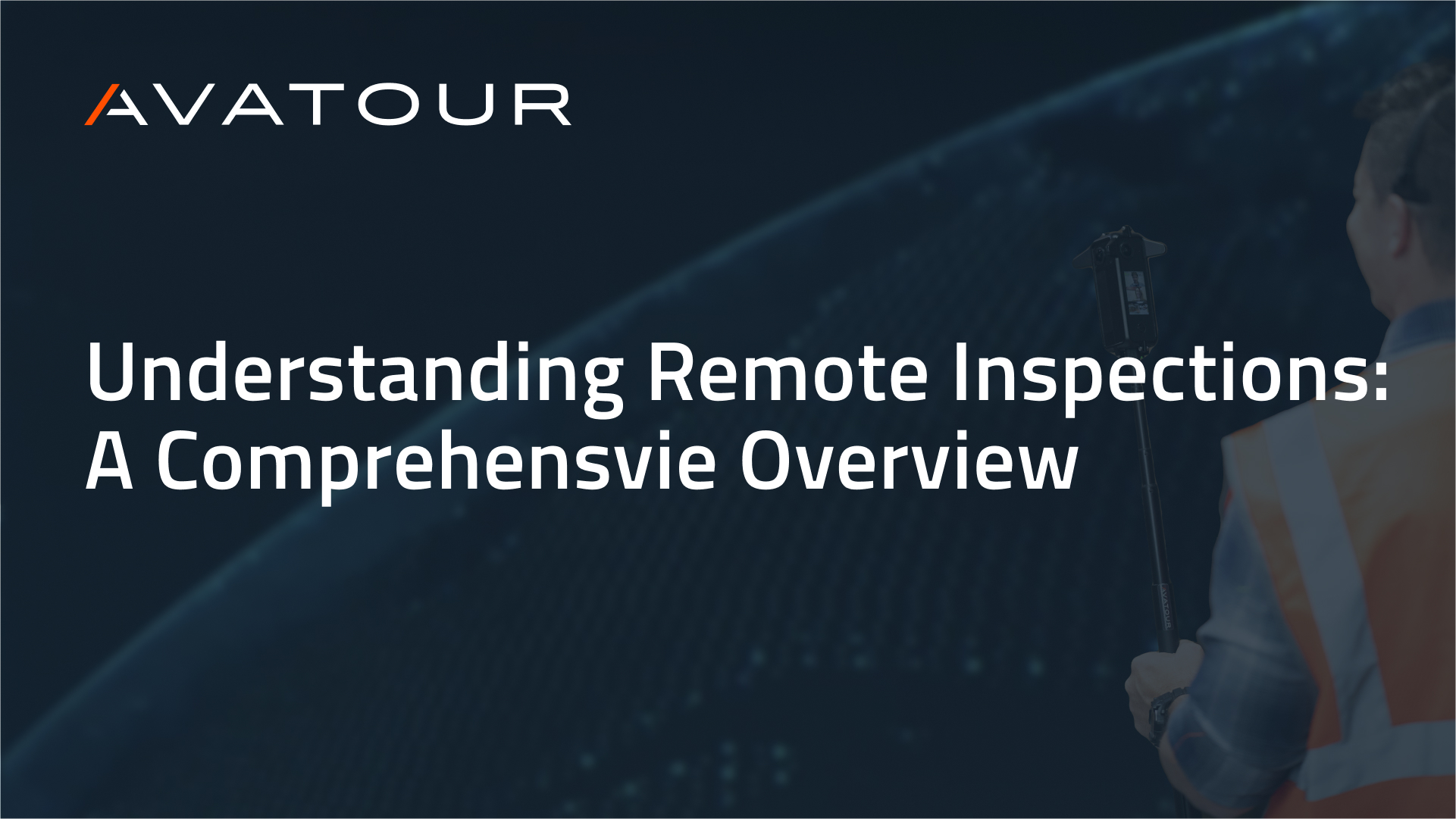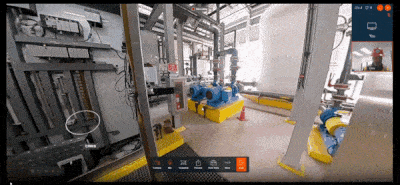
What is a Remote Inspection?
The Covid-19 pandemic forced industries worldwide to adapt swiftly to the new normal, with many turning to virtual solutions. One significant shift that emerged during this period was the widespread adoption of remote inspections. Initially implemented as a temporary solution to adhere to social distancing guidelines, remote inspections have evolved into a more permanent practice across various industries.
Remote inspections, conducted through video calls, live-streaming, and augmented reality tools, allowed professionals to remotely assess and evaluate assets, facilities, and projects. The success and efficiency of such inspections during the pandemic prompted industries like manufacturing, construction, and logistics, to recognize their long-term potential. As technology continued to advance, so did the capabilities of remote inspection software, enabling more accurate and detailed assessments. This transformation has led to a paradigm shift, with many organizations incorporating some level of virtual inspections into their regular operations, even as pandemic-related restrictions have been lifted.
Today, remote inspections are not only considered simply as a response to the global pandemic, but a strategic and sustainable solution for the future. Companies across industries have realized the benefits of harnessing new technology to streamline inspection processes, improve accessibility, and enhance overall operational efficiency.
Fully Remote Inspections vs. Hybrid Approaches
Fully Remote Inspections
Fully remote inspections harness cutting-edge technologies to evaluate sites, projects, or systems without the need for the inspector and other stakeholders to step foot on site. Using a variety of methods such as video conferencing, remote controlled drones, and augmented reality, inspectors and other remote stakeholders can conduct effective assessments from any location with a secure internet connection.
Hybrid Inspections
Hybrid inspections allow for a dynamic blend of on-site and remote components, offering a more flexible and balanced approach to the assessment process. While certain elements necessitate physical presence on-site, hybrid inspections seamlessly integrate innovative tools to leverage the strengths of both on-site and remote methodologies. The flexibility of hybrid inspections allows inspectors to optimize resources by reducing costs and saving time, and to adapt strategies based on the nature of the inspection.
Featured Article: How to Create a Hybrid Inspection Model
What are existing remote inspection techniques and methods?
Video Conferencing:
Video conferencing was the foundational remote inspection technique, most commonly used during the pandemic, that enabled real-time visual communication between inspectors and on-site personnel. Utilizing platforms like Zoom or Microsoft Teams, inspectors can guide on-site staff, observe equipment, and discuss findings remotely.
However, as more advanced technologies have been developed and introduced into the market, video conferencing solutions have become a less than ideal solution for remote inspection applications. Due to the limited visibility of most video conferencing platforms, it has shown to be less effective in most instances.
360° Video Conferencing:
360° video conferencing adds an immersive dimension to remote inspections by capturing a complete view of the inspection site. This technique allows inspectors to have a more comprehensive visual experience, exploring the space and surroundings in detail. It enhances situational awareness and can be beneficial in scenarios where a broader perspective is crucial for accurate assessments. Unlike standard videoconferencing, with 360° video conferencing, remote inspectors have full visibility, and full control over what they see.
Example: Avatour
Mobile-based Inspection Applications
Mobile-based inspection tools provide a platform for on-site personnel to capture, and share data directly from the field. These apps often include features like photo and video documentation, checklist completion, and real-time data synchronization that allow remote inspectors to then access critical information at their convenience.
Most commonly used for more simple inspection applications such as home inspections, mobile-based inspection tools save significant amounts of time by reducing the need to have inspectors travel to multiple locations, but rather, complete the inspection simply by gathering images and information from those already on site.
Example: VuSpex
Remote Controlled Drones:
Remote controlled drones offer a bird's-eye view of assets, infrastructure, or locations that are difficult to access otherwise. Equipped with high-resolution cameras and sensors, drones capture detailed images and videos, aiding inspectors in assessing large areas or hard-to-reach spaces. This technique is particularly valuable in industries such as construction, agriculture, and infrastructure inspection.
Example: Skydio
Augmented Reality (AR):
Augmented Reality enhances remote inspections by overlaying digital information onto the real-world environment. Through AR devices equipped by on-site personnel, remote inspectors can send and gather data, annotations, or instructions in real-time.
However, AR technology has mainly shown to be useful in remote assistance applications rather than inspection applications. Remote subject matter experts can give clear instructions through the point of view of the person on-site to better understand and instruct them through their tasks.
Example: HoloLens
Various remote inspection use cases across industries
Health & Safety Inspections
Remotely identify and mitigate risks and hazards, monitor safety protocols, equipment conditions, and emergency response systems. This approach enables inspectors to evaluate compliance with safety standards more frequently without having to travel on site each time or exposing personnel to potential risks.
QA & QC Inspections
Remotely assess manufacturing processes, product quality, and adherence to specifications. Facilitate quicker identification of defects, efficient communication with production teams, and implementation of corrective measures.
Regulatory Compliance Inspections
Remotely review facilities, processes, and documentation to facilitate more regular compliance checks and maintain robust regulatory oversight and adherence.
Continuous Improvement Inspections &Audits
Conduct systematic evaluations virtually to assess and enhance the efficiency, effectiveness, and consistency of organizational processes. Identify opportunities for improvement, ensure alignment with organizational goals, and foster a culture of ongoing enhancement within the company.
Site Inspections
Virtually assess and evaluate physical locations, such as construction sites, facilities, or properties, using digital tools and technology. Allow inspectors, stakeholders, and experts to remotely examine site conditions, compliance with safety standards, and overall project progress without the need for on-site presence.
Factory Acceptance Tests
Remote Factory Acceptance Tests (FAT) involve the assessment and validation of equipment or machinery in a manufacturing facility, conducted virtually to ensure compliance with specified design criteria, quality standards, and functional requirements. This allows clients and inspectors to remotely witness and verify the performance of equipment before it is delivered.
How to Conduct a Remote Inspection in 8 Simple Steps
The key to a successful remote inspection is to prepare thoroughly. While remote inspections are far more convenient than an in-person visit, they require extra preparation to ensure things run smoothly.
Step 1 — Prepare SOPs and other documentation
Prepare and organize any documents that will be required during the inspection, including the Standard Operation Procedures (SOPs). Any checklists, blueprints, and other related documents should be prepared in advance so they’re ready to go for your inspection.
Step 2 — Validate Connectivity
Planning your connectivity strategy ahead of the inspection is one of the most important steps you can take to ensure a successful remote inspection experience. If WiFi is available, start by evaluating that option. If there’s no WiFi on site, you can use cellular connection via your smartphone device or portable hotspot.
Use a free connectivity test tool like the one provided on the Avatour app (iOS, Android), which provides a continuous bandwidth test as you move through targeted areas. This tool is helpful whether or not you plan to use Avatour for the inspection.
Step 3 — Assign Inspection Roles
Determine who will operate the camera on site, manage the inspection itself, address technical issues, and so on. This will help avoid confusion and wasted time throughout the inspection.
Step 4 — Check the Equipment
In advance of the inspection, double check that all of the necessary equipment is on site, charged up, and ready to go. We highly recommend having extra batteries or other sources of power for inspections that will run longer than an hour.
Step 5 —Schedule the Inspection and Send Invitations
Schedule the inspection and send out invitations to each stakeholder. As with any virtual meeting, you should include reminders to ensure that each participant of the inspection is well aware of the inspection time and date.
Step 6 — Setup the Camera or Equipment and Start the Inspection
Set up your 360° camera, drone, AR headset, or other equipment required for the inspection, and start the inspection. By this point, you’ve done all the preparation necessary to ensure everything you need is on site, and all participants are accounted for.
Bonus Tip: It’s helpful to break up longer inspections into several sessions to avoid running out of battery and reduce fatigue. We recommend anything over an hour to two hours should be broken down into multiple sessions.
Step 7 — Record, Capture, and Annotate
Just as you would record a Zoom or Teams call, recording the inspection ensures you have something to refer back to at a later time.
If using the Avatour platform for the inspection, you have the option to record the meeting or to capture snapshots in both 2D and 360°. When recording the inspection, the 360° video stream will be recorded and stored automatically in the cloud.
When capturing snapshots, you have the option to capture in both 2D and 360°, as well as an option to annotate and make comments directly on the image. These snapshots will also be stored automatically.
Step 8 — Share the Recordings and Collect Feedback
Once the inspection is recorded, it’s important to share the recording with the proper stakeholders. Then, set a date to collect and review feedback.
Featured Article: Remote Inspection Checklist
Conclusion
Although remote inspections will never completely eliminate the need for in-person visits, they have undeniably revolutionized the way we assess, monitor, and improve various processes and systems; the efficiency gains, cost-effectiveness, and global accessibility afforded by remote technologies are unparalleled.
Striking a balance between the advantages of remote inspections and the irreplaceable value of in-person assessments allows for a holistic and adaptable approach. Embracing both methodologies ensures that organizations benefit from cutting-edge technologies while preserving the indispensable aspects of hands-on inspections.
Conducting remote inspections with Avatour
Avatour is the first 360° video-based communication platform built for remote inspections. Avatour’s unique 360° capabilities allow remote inspectors and stakeholders to visit sites virtually, for a more comprehensive and immersive viewing experience.

What can you do on Avatour?
Perform live remote inspections
Using a 360° camera, on-site personnel can stream a live 360° video feed directly into the video conferencing meeting to allow remote stakeholders to click & drag and explore the space.
Easily record inspection walkthroughs with 360° video
Record your inspection walkthroughs with 360° video, and upload them directly to the Avatour platform. This allows remote stakeholders to review those recordings at their convenience, or review recordings together in an Avatour meeting.
Create a library of recorded walkthroughs
The Avatour platform allows you to create a library of 360° videos that can quickly and easily be shared with other team members and stakeholders. These recordings can be accessed asynchronously or reviewed together in an Avatour meeting.
Avatour is redefining how organizations conduct remote inspections of their sites and facilities. Visit avatour.com to learn more.







